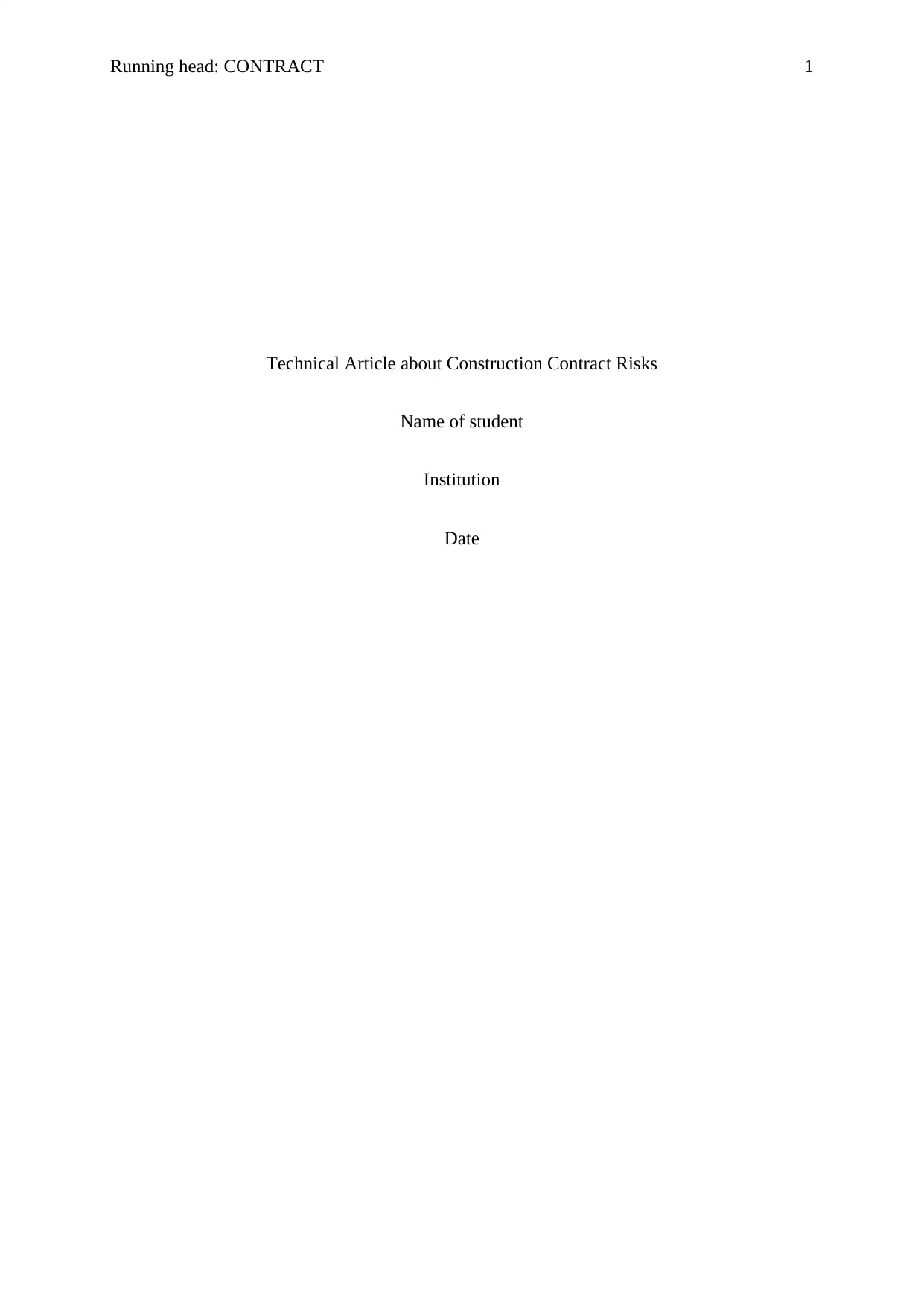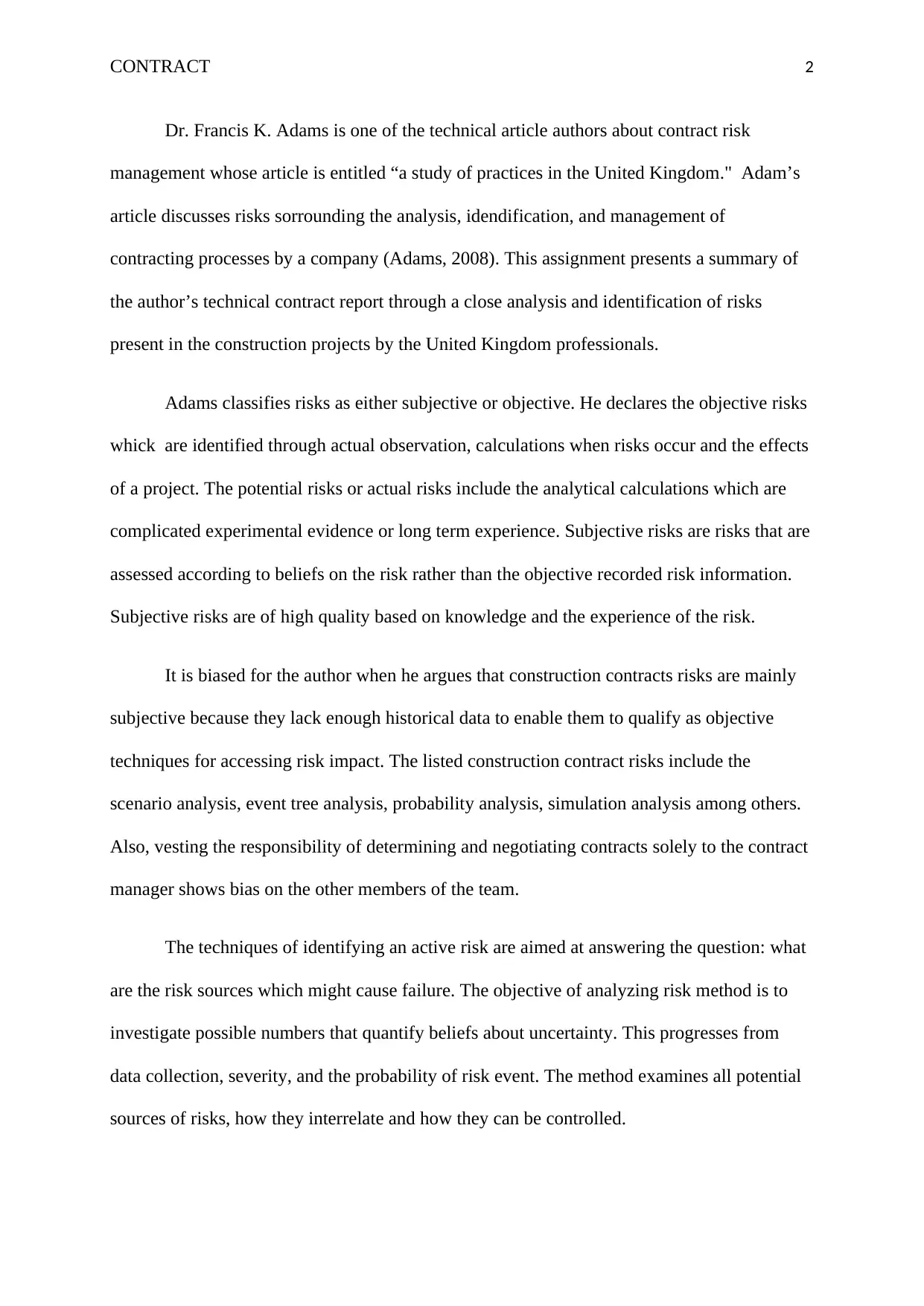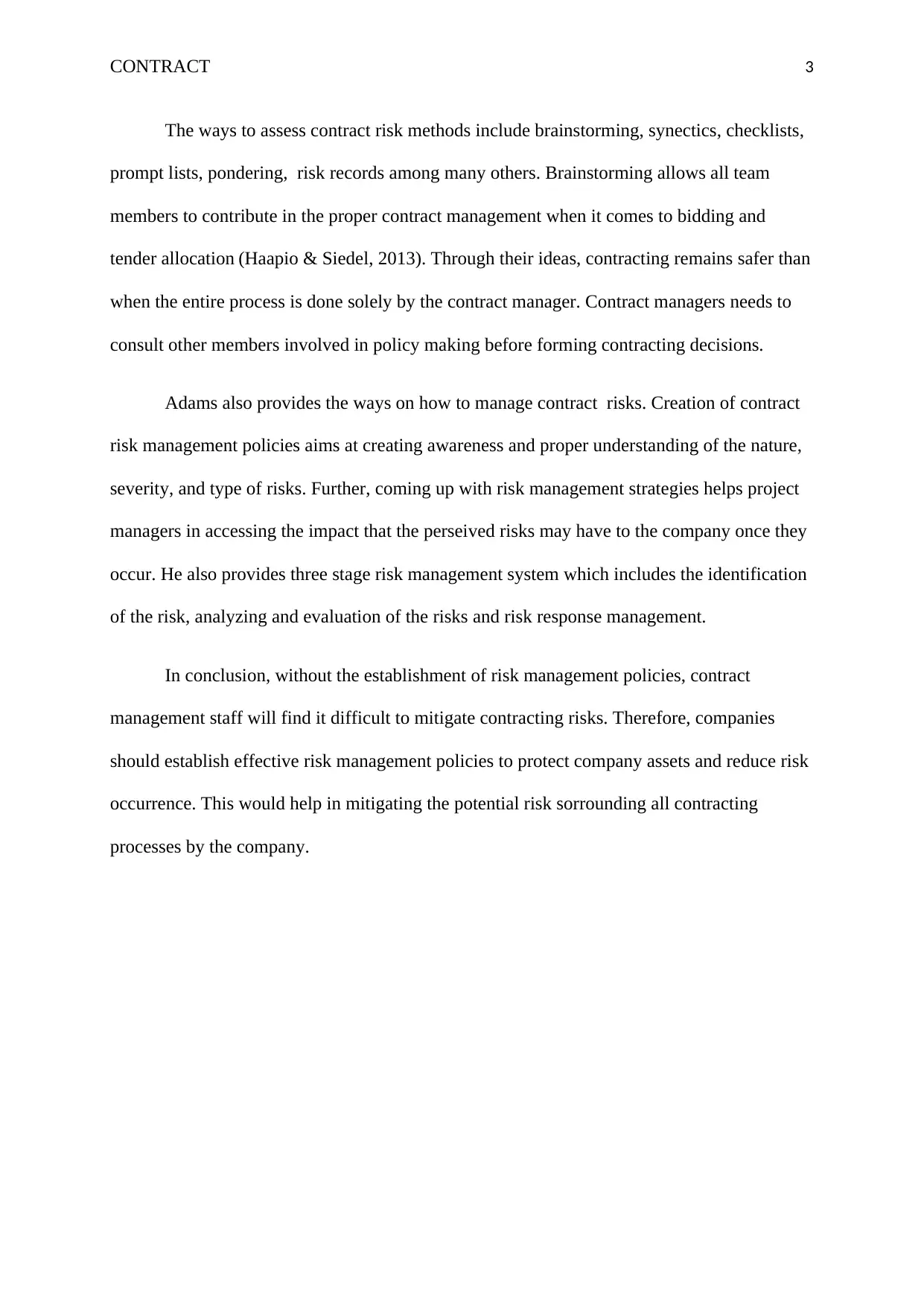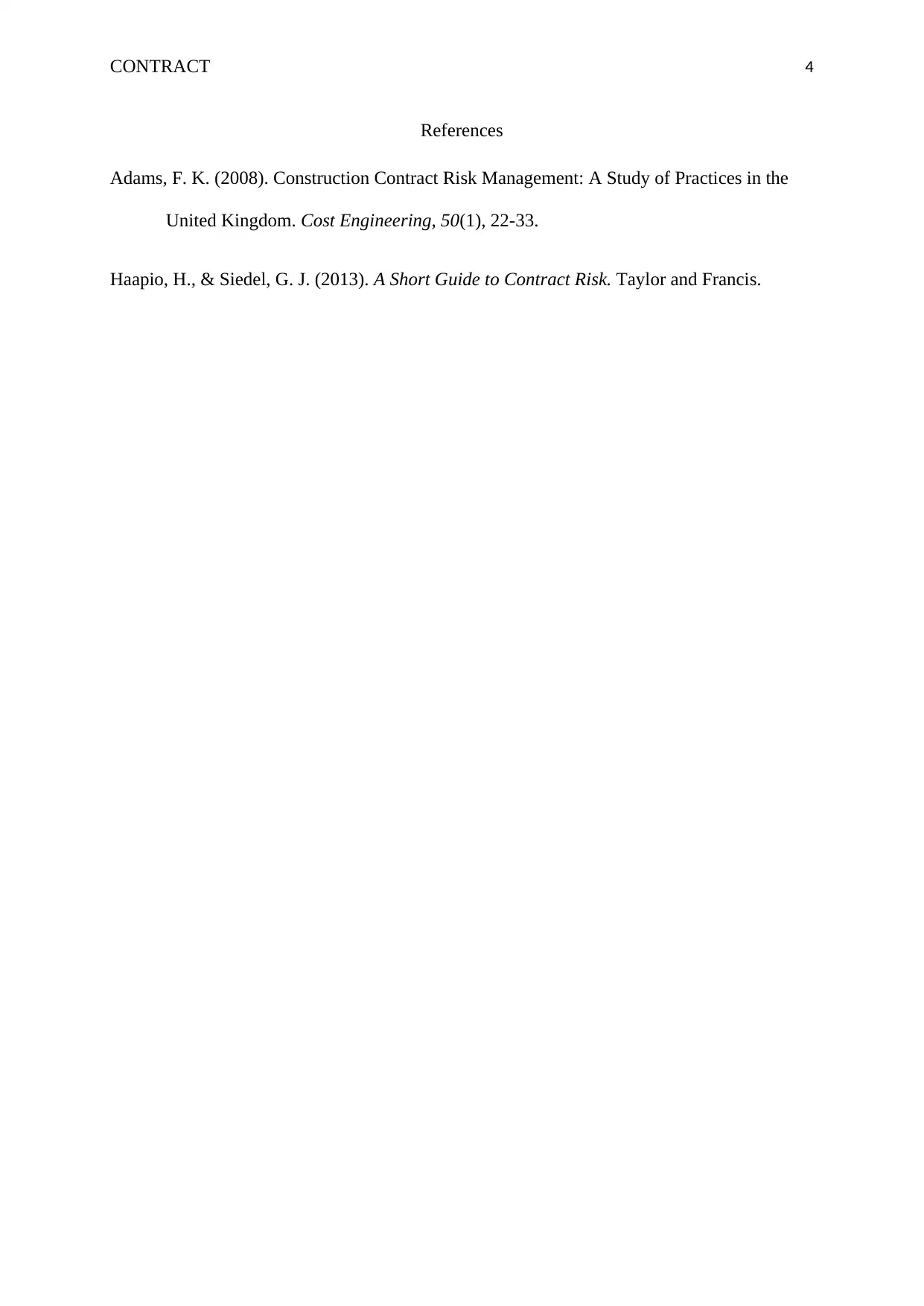Construction Contract Risk Management: Analysis of UK Report Risks
VerifiedAdded on 2020/03/04
|4
|647
|88
Report
AI Summary
This report analyzes a technical article on construction contract risk management, focusing on UK practices. The article discusses the identification and management of risks within contracting processes, classifying risks as either subjective or objective. Subjective risks, based on experience and knowledge, are highlighted due to the lack of sufficient historical data for objective assessment. The report examines various risk analysis techniques, including scenario analysis and probability analysis, and emphasizes the importance of team collaboration in contract management. It also explores methods for assessing contract risks, such as brainstorming, and outlines strategies for managing these risks through policy creation and a three-stage risk management system. The conclusion stresses the necessity of effective risk management policies to protect company assets and mitigate potential risks associated with contracting processes.
1 out of 4










![[object Object]](/_next/static/media/star-bottom.7253800d.svg)